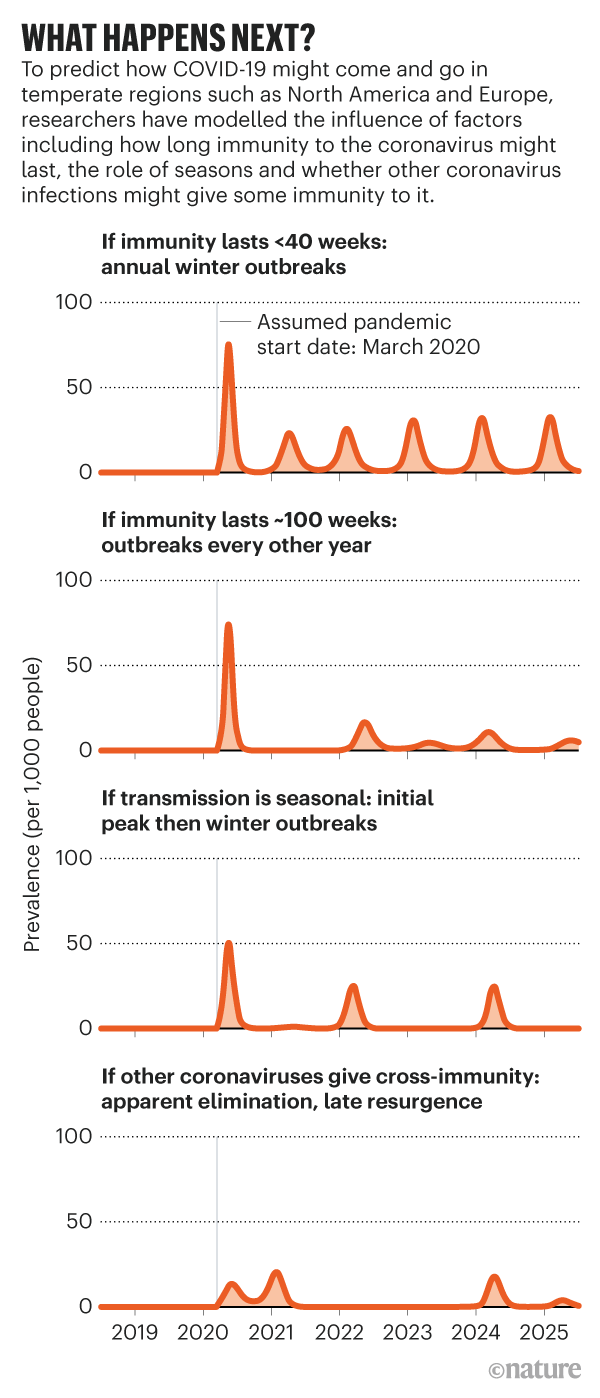Duration of immunity matters obviously. The bacteria yersinia pestis circulates within certain populations of rodents.
 When Will The Covid 19 Pandemic Be Over
When Will The Covid 19 Pandemic Be Over
H3N2 Pandemic 1968 The influenza viruses that caused the Hong Kong flu magnified approximately 100000 times.

How long is a pandemic. A pandemic without a vaccine. But what about the 1918 flu pandemic. Earlier in the pandemic it was unclear how long immunity after COVID-19 infection would last.
It killed hundreds of millions of people over a period of 2000 years. In June 2009 the WHO declared H1N1 swine flu a pandemic. And it looks like the length of time people shed for is about three weeks but its been measured at up to 37 days.
Pandemics can be both mild and severe depending on the disease itself. When MNT asked how long he thinks the pandemic will last he replied. Without a vaccine we are maybe looking at.
A virus in animals has caused no known infections in humans. Instead of it being hours days weeks were talking months and years palliative specialist Dr. For instance our modeling suggests that if natural immunity to COVID-19 lasts six to nine months as opposed to multiple years like tetanus or lifelong like measles herd immunity is unlikely to be.
The Black Death of 1346-1353 is considered the. The real question is can you keep it down long enough to have a vaccine. We are in the thick of a pandemic - but one day it will end.
For example following the 191819 pandemic there were two other 20th-century influenza pandemics. The most recent pandemic for example was in 2009 with the global spread of the H1N1 strain of influenza. While the outbreak formally reached pandemic levels by spreading across the globe the disease had a mild impact in many countries.
The last time a pandemic was declared was 11 years ago. Belgian virologist Guido Vanham explores how that might happen - and what are the factors at play. Cases of Covid-19 are on the rise in more than 19 states and in just one day this week the US.
The pandemic is far from over. The WHOs pandemic alert system ranges from Phase 1 a low risk to Phase 6 a full pandemic. By August 2010 it was announced a post-pandemic period.
Experts consider it the most severe pandemic in history. The 1957 Asian flu pandemic and the 1968 Hong Kong flu pandemic. Then from a day or two before you start showing symptoms youre shedding the virus that is youre able to infect others.
Clark said the trajectory of the. Its not even in decline. The Spanish flu pandemic from 1918 to 1920 claimed 100 million lives.
Its the big historical pandemic many have compared COVID-19 to so how did it end in the absence of a vaccine. While this was substantially lower than the total number of deaths from previous influenza pandemicssuch as the 1968 outbreak of Hong Kong flu which caused more than 750000 deaths and the influenza pandemic of 191819 which claimed the lives of an estimated 25 million to 50 million peoplethe rate at which H1N1 spread globally was unprecedented. Pandemics happen when a new virus emerges to infect people and can spread between people sustainably The Facebook post suggests that pandemics only occur every 100 years.
The 1968 flu pandemic was caused by the influenza H3N2 virus. Its rapid global dissemination. He also pointed to research that shows the immune system reaction to the virus is short-lived with antibodies lasting only two to three months versus three to 12 months for other viruses.
On March 11 2020 the World Health Organization announced that the COVID-19 virus was officially a pandemic after barreling through 114 countries. They predict we may see a 2nd larger wave of infections this fall. In a virtual news conference Tuesday Dr.
The coronavirus pandemic could last up to 2 years according to US experts. Influenza pandemics are estimated to occur roughly once every 50 years though the actual pandemic interval has in some instances been shorter than this.
